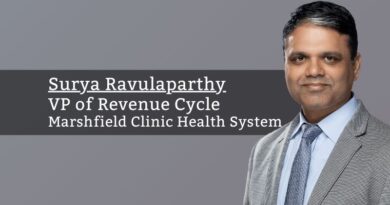Clinicians and Revenue Cycle: Why the separation?
By William Gress, RN, MHA, BSN, CHFP, CRCR, Director, Revenue Cycle Operations, Cottage Health
Healthcare is a business unlike any other. Many economists describe healthcare as an imperfect market, where the consumer is not the one paying for the goods and services; they have limited knowledge on what they are buying, and they have little to no ability to shop for a deal in many scenarios. Healthcare has similar imperfections on the provider side in terms of reimbursement. From service line directors to physicians, many do not fully understand what they are or are not getting paid for. Providers are continuously dealing with multiple nebulous policies across several different payers that can have a material impact.
Currently, nearly every provider in the country is experiencing a similar top-down directive to decrease costs and increase revenue with the ultimate goal of increasing cash in the door. Once again, the idea of an imperfect market in healthcare appears. How can these clinical leaders improve cash flow if their primary source of truth is a revenue and usage report?
There is value in the collaboration of revenue cycle staff in many committees and initiatives, given the current strain of hospital finances.
Since 2011, when incentives appeared promoting the adoption of electronic health record (EHR) systems, the ability to acquire detailed data has improved significantly. One can extract virtually any clinical or financial data point from these systems, and business intelligence (BI) tools can visualize the data. This financial data has not always been readily available, shared, or interpreted by clinical stakeholders for a multitude of reasons. First, it could simply be company culture, keeping reimbursement and money talk away from clinical practice. Secondly, it could be the fact that reimbursement data can be difficult to interpret and there may be significant manual lifting to get it in comprehensible format for clinicians; as electronic remittance info can make little sense and payers make it intentionally confusing. Because of this, the Revenue Cycle (or their data) may have been siloed from project management and clinical decision-making.
With these silos in place, service line directors are placed in a poor position to succeed under the direction of increasing cash. Not understanding concepts like the impact of payer mix has enormous strategic implications. Shifts in the payer mix as small as one percent can mean missing revenue targets for the department or for the facility.
Capital requests for new, high-tech equipment to complete procedures, tests, or treatments have billing implications that should be stamped by the revenue cycle. The pro formas that can be driven by vendor information should be confirmed by revenue integrity for accuracy. Payer policy and national/local coverage determinations should be confirmed by patient financial services. Not understanding the payer policy and billing requirements can utterly derail any value gained by the capital request.
Medicare is the largest payer for many facilities. With Medicare comes the diagnosis-related group payment, and with bundled payments comes the need to manage length of stay (LOS). While moving LOS is multi-faceted, there are ways to quantify the metric. Imagine the impact on physician and case management leadership if you can report how much impact 0.1-day improvement in LOS has on the bottom line. Expected payment-to-charge ratios, cost data, or contractual expected reimbursement can be applied to LOS metrics to drive home the importance of throughput.
Many bedside and clinical staff have little understanding of the back-end impact of the work they complete on a daily basis. Processes like registration and prior authorization have significant impacts down the line. Meetings with ancillary outpatient departments and clinics to review preventable denials create a sense of value in the work these registration teams complete. The processes in these satellite areas are harder to keep reigns on. Providing this simple data can add allies to your initiatives which improve margins and reduce revenue leakage through denials.
While not applicable to all facilities, the revenue cycle staff typically have strong knowledge of payer contracts which again can provide valuable insights. Many health systems closely guard what is in their managed care contracts and the rates they contain. It may not be great to share these with all clinicians, but understanding the impacts these agreements could have on operations and reimbursement can be beneficial.
Finally, if clinicians understand their charges, reimbursement, and revenue, they can escalate if a process breaks down or the EHR misbehaves.
There is value in the collaboration of revenue cycle staff in many committees and initiatives, given the current strain of hospital finances. The financial and clinical data is there. It should be time to consider merging this data, as the value may be surprising.



